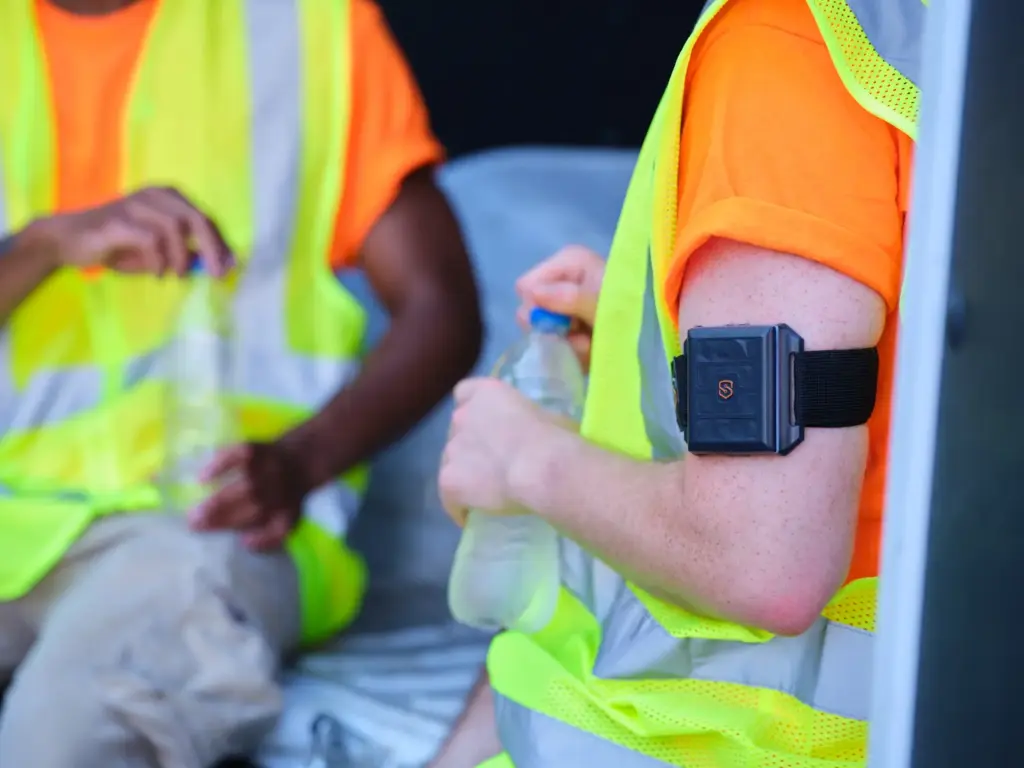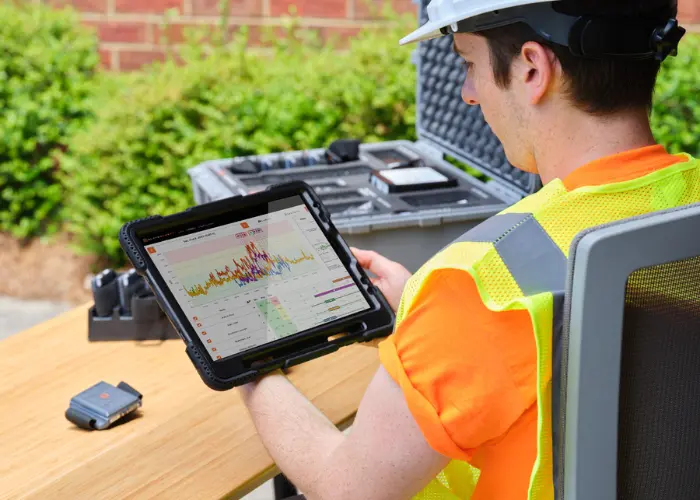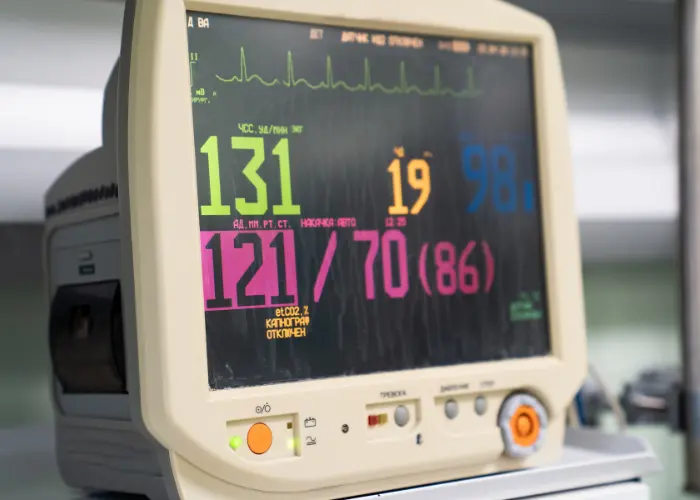Many safety professionals face the challenge of protecting workers from heat stress and overexertion. However, myths about physiological monitoring can lead to hesitation in adopting these life-saving tools. In this article, we’ll shatter common misconceptions about physiological monitoring and reveal how it serves as a powerful, preventative safety tool.
Common Myths About Physiological Monitoring
Understanding the critical role of physiological monitoring can be daunting due to various myths and misconceptions. However, addressing these myths is the first step towards appreciating the true value of this game-changing technology.
Myth 1: Physiological Monitoring is Invasive and Uncomfortable
Some believe that physiological monitoring involves bulky, intrusive devices. This misconception often stems from outdated technology. The thought of wearing cumbersome equipment while working can deter companies from adopting these safety measures.

Reality: High-quality modern wearables are designed for comfort and minimal intrusion. These armbands are lightweight and easy to wear, ensuring workers can perform their duties without discomfort.
- Sleek Design: Today’s devices feature a sleek, ergonomic design that fits comfortably on the arm, allowing for a full range of motion.
- Comfortable Materials: Made from comfortable materials, wearables have become more suitable for long shifts in various environments.
- Adjustability: The device is adjustable to fit different body types, ensuring a secure fit without being restrictive.
For example, in the manufacturing sector, workers can wear these modern armbands throughout their shifts, continuously monitoring their physiological data without any hindrance to their tasks.
Myth 2: Physiological Monitoring is Only for Elite Athletes or Special Forces

Another common myth is that physiological monitoring is only relevant for elite athletes or special forces. This belief is rooted in the history of high-performance monitoring being used primarily in these fields to track extreme physical exertion.
Reality: Physiological monitoring is widely applicable across various industries, including manufacturing, construction, and healthcare. These sectors use these products to monitor and enhance worker safety, proving their versatility and importance.
- Manufacturing: In manufacturing plants, workers often perform physically demanding tasks in high-temperature environments. These devices can monitor their core body temperature and heart rate, providing real-time alerts if they approach dangerous levels.
- Construction: Construction workers frequently face harsh outdoor conditions. Physiological monitoring helps ensure they are not overexerted, particularly during hot summer months when the risk of heat stress is high.
- Healthcare: Healthcare professionals, especially those in emergency services, operate under high-stress and physically taxing conditions. Monitoring devices can help manage their exertion levels, ensuring they remain fit to perform critical tasks.
For instance, a construction company using these monitoring devices can track workers’ exertion levels during peak summer. This data allows supervisors to adjust work/rest cycles, ensuring no one is overexerted, thereby enhancing overall site safety.
Myth 3: Physiological Monitoring is Too Expensive for Most Organizations
Cost is sometimes cited as a barrier to adopting physiological monitoring. The initial expense can seem daunting, particularly for small to medium-sized enterprises.
Reality: While there is an initial investment, the long-term cost savings from injury prevention and improved productivity outweigh the expenses.
- Injury Prevention: Monitoring helps detect early signs of heat stress or overexertion, preventing costly medical emergencies and reducing downtime.
- Productivity Gains: By optimizing work/rest cycles based on real-time data, companies can enhance worker productivity and reduce fatigue-related errors.
- Compliance: Meeting safety standards and regulations can prevent fines and legal issues, adding to the overall cost savings.
For example, in the utility sector, implementing these devices has led to a marked decrease in heat-related incidents, demonstrating the financial and operational benefits of proactive safety measures.
Myth 4: Physiological Monitoring Devices are Complex and Difficult to Use
Some may think that these devices are too complicated for everyday use. This misconception can make safety professionals hesitant to adopt new technologies, fearing a steep learning curve and potential disruptions.
Reality: Modern, thoughtfully designed physiological monitoring devices feature user-friendly interfaces and integrate seamlessly with existing safety protocols. Their intuitive software and applications make it easy for safety professionals to monitor real-time data and respond swiftly.
- Ease of Use: These devices are designed with the user in mind. Simple setup processes and clear instructions ensure that even those with limited tech experience can operate them effectively.
- Training and Support: Companies often provide comprehensive training and ongoing support to ensure smooth implementation. This includes instructional videos, user manuals, and responsive customer service.
- Integration: Devices can be integrated into existing safety management systems, allowing for a unified approach to worker health and safety. This reduces the need for multiple platforms and streamlines the monitoring process.
For instance, in the healthcare industry, nurses and emergency responders can quickly learn to use these devices to monitor vital signs in real time, ensuring timely interventions during critical situations. This ease of use significantly enhances the effectiveness of physiological monitoring.
Myth 5: Physiological Monitoring Provides No Significant Benefit Over Traditional Methods
Some believe that traditional safety methods are sufficient. This viewpoint often stems from a reliance on established practices and a reluctance to embrace new technologies.
Reality: Physiological monitoring provides real-time data and alerts, enabling proactive safety measures. This approach can prevent incidents before they happen, unlike traditional methods, which often react to issues after they occur.
- Real-Time Alerts: These devices send immediate notifications when a worker’s physiological data indicates potential danger, allowing for prompt action.
- Data Analysis: Continuous monitoring provides valuable data over time, helping to identify patterns and predict future risks. This proactive stance is crucial for preventing accidents and health issues.
- Incident Prevention: With real-time monitoring, potential issues such as heat stress, dehydration, or overexertion can be addressed before they escalate into emergencies.
For example, in the construction industry, real-time monitoring can alert supervisors to a worker’s elevated core temperature, prompting an immediate break and hydration. This proactive approach can prevent heat-related illnesses and ensure a safer working environment.
As we’ve seen, many physiological monitoring myths are based on outdated information or misunderstandings. However, the benefits are clear: proactive safety measures, improved productivity, and regulatory compliance. But how can you effectively implement these solutions in your workplace?
SlateSafety Can Help

SlateSafety offers cutting-edge solutions designed to protect workers and enhance productivity. By leveraging the latest in wearable technology and real-time data monitoring, SlateSafety provides comprehensive safety measures tailored for various industries.
- Innovative Wearable Products: SlateSafety’s BAND V2 monitors heart rate, core body temperature, and exertion levels. The BEACON V2 provides environmental monitoring, measuring temperature, humidity, and heat index, as well as eWBGT, an estimation of Wet Bulb Globe Temperature.
- User-Friendly Software and Applications: Their software allows for real-time data monitoring and alert configuration, accessible through web, iOS, and Android platforms. This ensures that safety leaders have the tools they need at their fingertips.
- Comprehensive Safety Solutions: By integrating physiological and environmental monitoring, SlateSafety offers customizable alert thresholds and actionable insights. This comprehensive approach enhances workplace safety and efficiency.
- Enterprise-Grade Security and Privacy: SlateSafety prioritizes data protection with SOC-2 compliance, multi-factor authentication, and single sign-on options. This ensures that organizational data remains secure and private.
Don’t let outdated myths stand in the way of enhancing your workplace safety. Take the first step towards proactive safety management—explore SlateSafety’s innovative solutions today and make a lasting investment in your workforce’s well-being.

